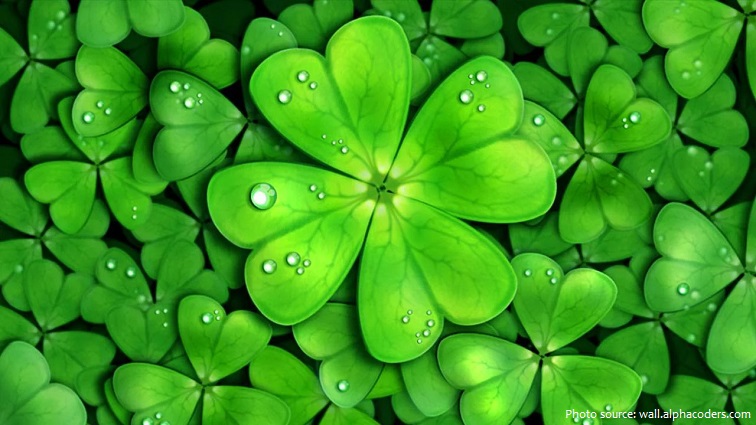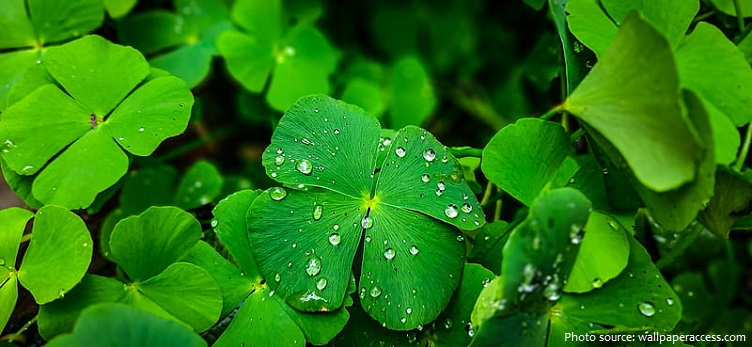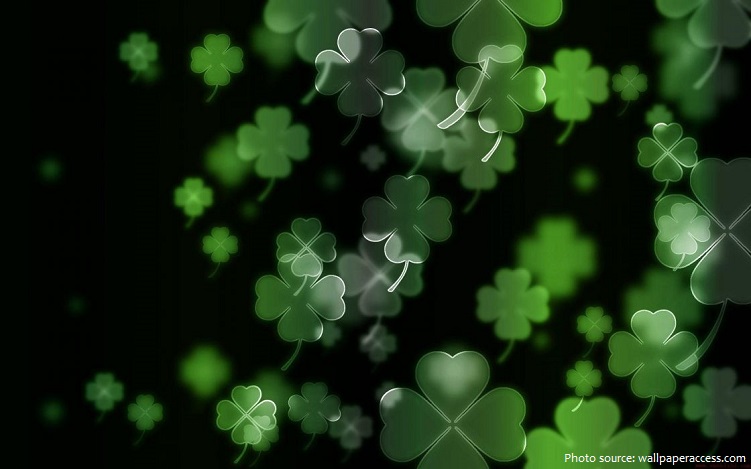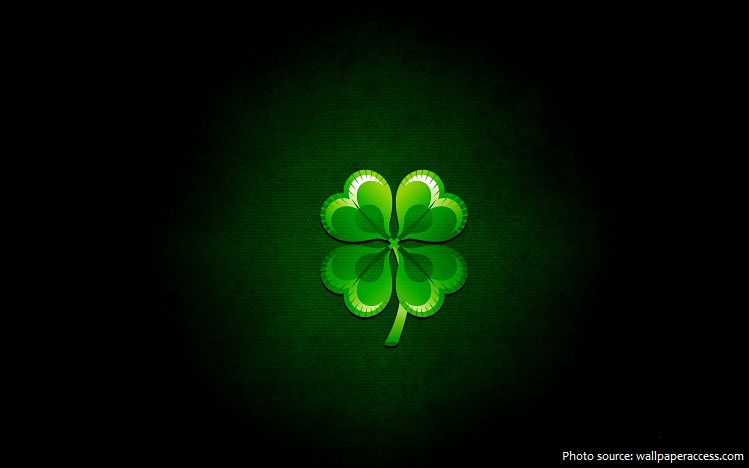
The four-leaf clover is a rare variation of the common three-leaf clover.
The leaves of four-leaf clovers are said to stand for faith, hope, love, and luck.
It’s often said that Ireland is home to more four-leaf clovers than any other place, giving meaning to the phrase “the luck of the Irish.”
The early Celtic priests believe the rare leaf offered protection from bad luck. Interestingly, the Druids braced themselves to encounter evil spirits shortly after coming across a stray four-leaf clover, believing the leaf represents a warning that could help them prepare or escape misfortune in time. For this same reason, courageous children who wanted to see fairies and other supernatural beings wore four-leaf clovers as jewelry.

In Christianity, legend dictate that when Eve, the first woman, realized that she was being cast out of the Garden of Eden, she stashed away a four-leaf clover as a ‘remembrance,’ so she would not forget how beautiful and wonderful Paradise was.
Early-day Egyptians also used to present newlyweds with four-leaf clovers to bless the marriage.
In the Middle Ages, it was believed by some Celtic groups that wielding a four-leaf clover would help you see fairies, as well as to ward off evil spirits and grant the holder good luck.
“If a man walking in the fields find any four-leaved grass, he shall in a small while after find some good thing.” – these words from Sir John Melton, written in 1620, appear to be the first literary documentation of what early people thought about four-leaf clovers.

Some folk traditions assign a different attribute to each leaf of a clover. The first leaf represents hope, the second stands for faith, the third is for love and the fourth leaf brings luck to the finder. Some reports claim six to be fame and seven to be longevity, though the notions’ origination is unknown.
Others say that four-leaf clovers granted the power to see fairies, or that they are related to Saint Patrick’s use of the shamrock to explain the Christian doctrine of the Holy Trinity to the Irish.
An actual survey of approximately 7 million clovers found the frequency to be about 5000 to 1, twice the commonly stated probability of 10,000 to 1. According to this survey, the frequency of a five-leaf clover is 24,400 to 1, and of a six-leaf clover is 312,500 to 1. Even so, this probability has not deterred collectors who have reached records as high as 160,000 four-leaf clovers in a lifetime. The world record for number of four-leaf clovers collected in one hour is 166, set by American Katie Borka on June 23, 2018.

The most leaves on a clover stem is 56 and was discovered by Shigeo Obara of Hanamaki City, Iwate, Japan, on 10 May 2009. Mr. Obara has studied clovers for many years and was the finder of the previous record holder in this category.
The record for the largest collection of four-leaf clovers belongs to Edward Martin Sr. from Cooper Landing, Alaska, USA, with 111,060 four-leaf clovers, as of May 2007, which he has been collecting since 1999.
The largest collection of five-leaf clovers is 31,336 belonging to George Kaminski (USA), since 1995.
The largest collection of six-leaf clovers is 27 belonging to László Hegedűs (Hungary) in Markaz, Hungary, as verified on 23 September 2021.

Jenny Thompson of Northumberland, UK has collected 17 seven-leaf clovers during the spring and summer months she spent walking through farmland near her home in 1998.
The most four-leaf clovers collected in one hour by an individual is 451, and was achieved by Gabriella Gerhardt (USA) in Fitchburg, Wisconsin, USA, on 21 September 2019.
Celtic Football Club, an association football team from Glasgow, Scotland, have used the four leaf clover as the club’s official badge for over 40 years.
Italian automobile maker Alfa Romeo used to paint a four-leaf clover, or quadrifoglio, on the side of their racing cars. This tradition started in the 1923 Targa Florio race, when driver Ugo Sivocci decorated his car with a green clover on a white background.
In Japan, the Green Cars of Shinkansen use a four-leaf clover logo.
While shamrocks and four-leaf clovers are often confused but there are significant differences between the two. A shamrock is a traditional three-leaf clover, a symbol of Ireland for centuries. It’s also connected to Christianity as the three leaves are believed to represent the Holy Trinity as well as Faith, Hope and Love. It’s the more common variety of clover and can be found everywhere on the island. When celebrating St. Patrick’s Day, the shamrock is the correct symbol to use.
